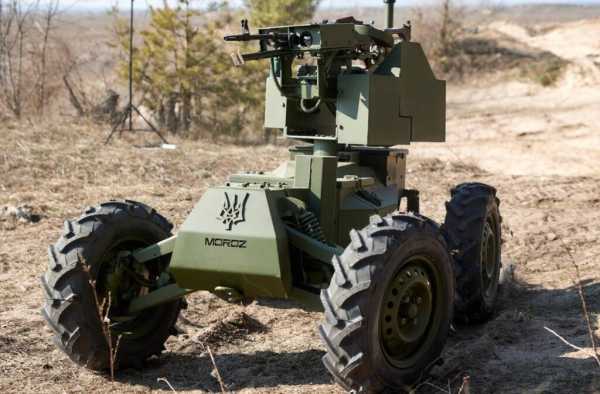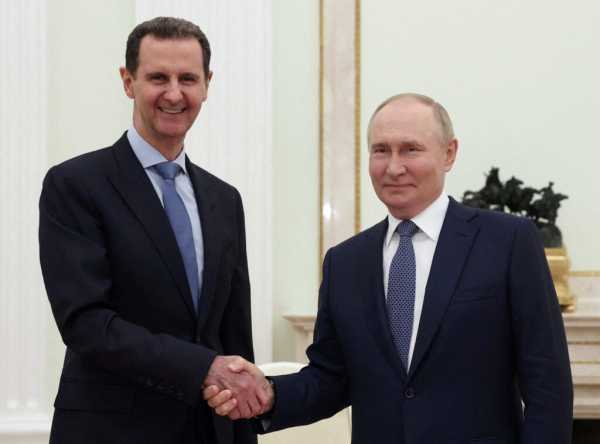
In December 2024, Ukrainian forces operating north of Kharkiv reportedly carried out their first attack on Russian positions using only unmanned technology. This landmark military operation, which used a combination of machine gun-equipped ground drones and kamikaze aerial drones, highlighted Ukraine’s increasingly sophisticated use of robotic systems, as well as the evolving role these technologies play on the modern battlefield.
As Ukrainian commanders prepare for a fourth year of combat in Europe’s largest war since World War II, they are now hoping that their country’s growing arsenal of robotic systems can help counter Russia’s often overwhelming superiority in both manpower and firepower. “Ukrainian officials have repeatedly emphasized Ukraine’s efforts to use technological innovation and asymmetric strike capabilities to offset Ukraine’s manpower limitations, in contrast to Russia’s willingness to tolerate unacceptable casualty rates for minor territorial gains,” the Institute for the Study of War noted in late 2024.
Ukraine’s emphasis on unmanned robotic systems certainly makes sense. While overall Ukrainian casualties in the first three years of a full-scale invasion are thought to be significantly lower than Russia’s, Russia’s much larger population means Ukraine has little chance of succeeding in a grueling war of attrition. Over the past year, reports of mobilization problems and personnel shortages in Ukraine have become increasingly common, and desertion rates have also reached record levels.
Given the numerical and firepower superiority of the Ukrainian military, innovation in defense technology has played a major role in Kyiv’s war efforts since 2022. Many of Ukraine’s key achievements have been made possible by the country’s vibrant startup sector, many of which have pivoted to military projects since Russia’s full-scale invasion. In July 2024, the Associated Press reported that Ukraine had developed an ecosystem of labs to build a robot army, with about 250 defense startups operating in secret locations “that typically look like rural auto repair shops.”
The Ukrainian government has sought to support these grassroots efforts by creating initiatives such as the BRAVE1 defense technology cluster, which was established in spring 2023 to streamline cooperation between the private sector, the state, and the Ukrainian military. In a move that officials in Kyiv hailed as a unique development, Ukraine launched a dedicated counter-drone unit within the country’s armed forces in summer 2024. The creation of the Ukrainian Unmanned Systems Force demonstrated that Kyiv was preparing for “the war of the future, not the war of the past,” said U.S. Army Commander Col. Vadym Sukharevsky.
Robotic systems alone cannot solve the Ukrainian army’s manpower shortage. The current focus is on developing technologies that can perform a range of specific combat and logistics tasks. For example, Ukraine plans to deploy tens of thousands of robotic ground vehicles along the war’s 1,000-kilometer front lines by 2024. These systems will perform functions such as laying and clearing mines, delivering ammunition and other supplies to troops in the trenches, and evacuating wounded soldiers to rear positions where they can receive medical care.
Unmanned ground vehicles are seen by Ukrainian military planners as a particularly effective response to the ubiquitous presence of reconnaissance and attack drones over the battlefield. With the entire frontline now under more or less constant surveillance, it can be extremely difficult for soldiers to move around on the ground, and nearly impossible to travel in vehicles without electronic jamming devices. Robotic systems that can operate in hazardous conditions could go some way to addressing this issue and helping to ensure timely resupply of units on the front lines.
The Ukrainian military’s use of robotic systems is already attracting international attention. Since new models are usually tested in combat conditions, the cycle from development to deployment is often exceptionally dynamic, creating unprecedented opportunities for defense technology companies. Maintaining the current rapid pace of innovation in Ukraine is considered vital to staying ahead of Russia, which is also investing heavily in robotic systems and drones.
With Ukraine’s efforts to adopt AI technology expected to advance in 2025, there are concerns that the emerging robot armies currently forming on Ukraine’s battlefields could lower the barriers to killing and dramatically increase the potential for future conflicts. However, as their country fights for survival, Ukraine’s defense tech developers are primarily concerned with saving the lives of their countrymen and preventing Russian invasion.
David Kirichenko is a research fellow at the Henry Jackson Society.
Source: Source



